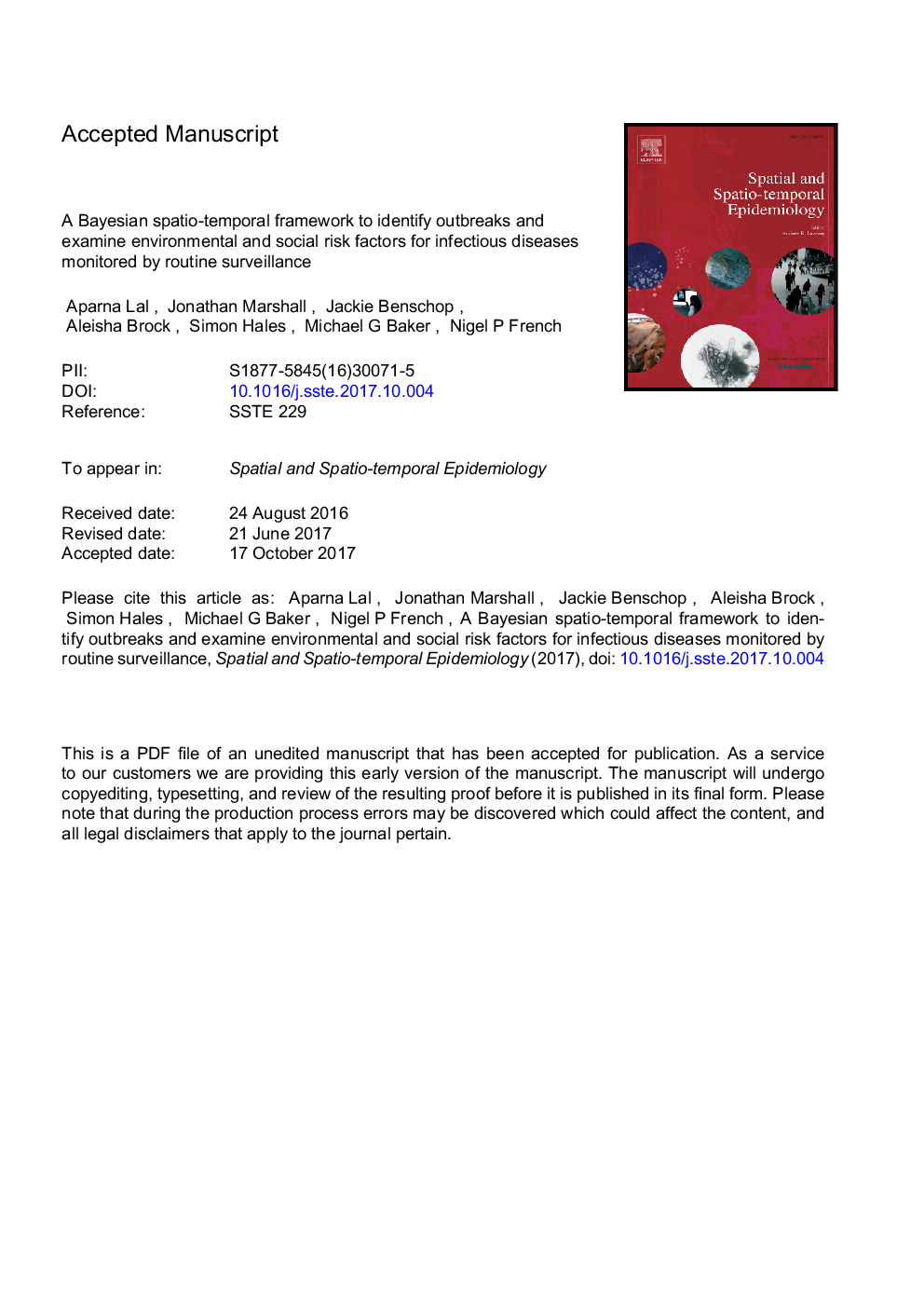| Article ID | Journal | Published Year | Pages | File Type |
|---|---|---|---|---|
| 7495795 | Spatial and Spatio-temporal Epidemiology | 2018 | 21 Pages |
Abstract
Spatio-temporal disease patterns can provide clues to etiological pathways, but can be complex to model. Using a flexible Bayesian hierarchical framework, we identify previously undetected space-time clusters and environmental and socio-demographic risk factors for reported giardiasis and cryptosporidiosis at the New Zealand small area level. For giardiasis, there was no seasonal pattern in outbreak probability and an inverse association with density of dairy cattle (β^1 = â0.09, Incidence Risk Ratio (IRR) 0.90 (95% CI 0.84, 0.97) per 1 log increase in cattle/km2). In dairy farming areas, cryptosporidiosis outbreaks were observed in spring. Reported cryptosporidiosis was positively associated with dairy cattle density: β^1 = 0.12, IRR 1.13 (95% CI 1.05, 1.21) per 1 log increase in cattle/km2 and inversely associated with weekly average temperature: β^1 = â0.07, IRR 0.92 (95% CI 0.87, 0.98) per 4 °C increase. This framework can be generalized to determine the potential drivers of sporadic cases and latent outbreaks of infectious diseases of public health importance.
Related Topics
Health Sciences
Medicine and Dentistry
Public Health and Health Policy
Authors
Aparna Lal, Jonathan Marshall, Jackie Benschop, Aleisha Brock, Simon Hales, Michael G Baker, Nigel P French,
